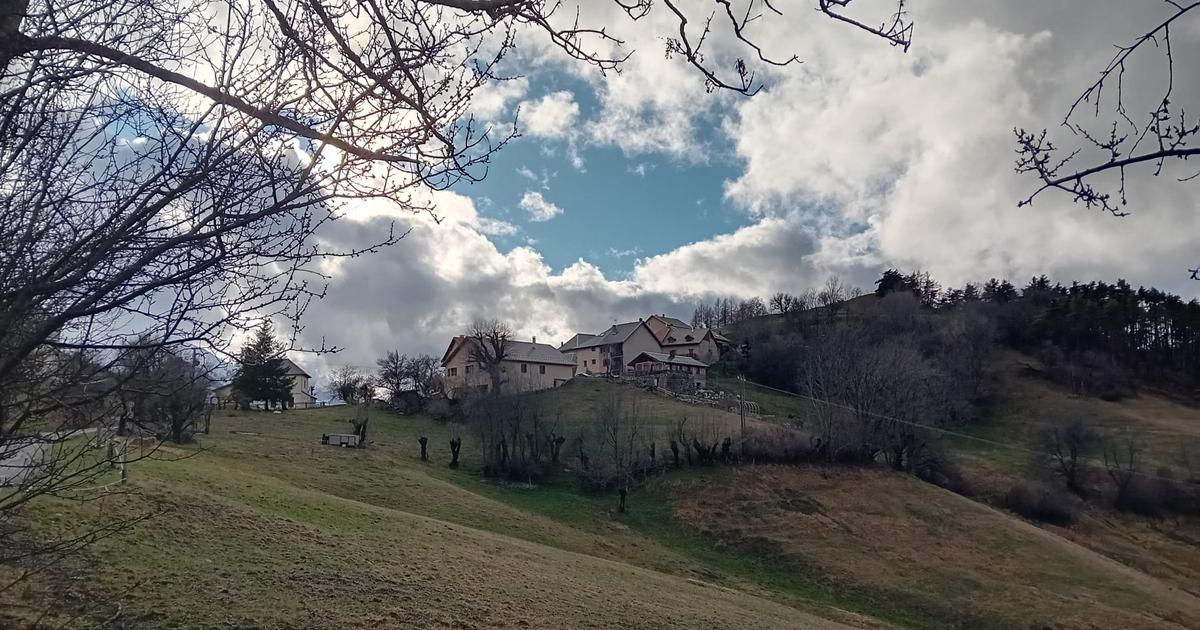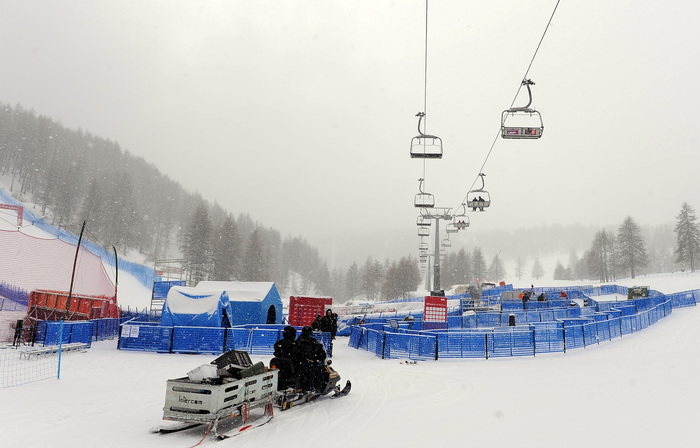The phenomenon is natural and harmless.
“These are red microalgae of the Sanguina genus, invisible to the naked eye, but which abound to such an extent that they color the snow.
This spectacular proliferation is called a
bloom
”, details Éric Maréchal, research director at the cell and plant physiology laboratory in Grenoble (Isère).
He coordinates the Alpalga consortium (association of the words alpes and algae) which brings together researchers from the CNRS, CEA, Météo France, Inrae and the University of Grenoble around the study of snow algae.
“When you ski in winter, you slide on these microalgae. But we do not perceive them because they are green and less numerous, continues Éric Maréchal. It is when the solar radiation becomes very strong, from May, that the algae make a shield of red molecules playing the role of sunscreen. It also coincides with the time when they multiply and offer surreal landscapes on the peaks. "
In the Alps, one spoke of “blood of the glaciers” in the oral tradition.
If the microscope has made it possible to unravel this thousand-year-old mystery, on which eighteenth century biologists such as Saussure were already stumbling, other questions are tormenting twenty-first century scientists.
They wonder, for example, why the “red snows” are on the rise in recent years.
The trail of the increase in CO2 in the atmosphere, due to human activities, holds the rope, because the algae feed on it.
"An unknown world"
"We are clearing an unknown world, like an unexplored ocean at an altitude of more than 2000 meters", enthuses Éric Maréchal.
“No one had imagined all this life under the tip of our skis.
And yet, snow isn't all about ice crystals.
It therefore shelters these algae, which feed on carbon dioxide and light.
Next are the bacteria, which eat them.
Knowledge of this ecosystem should encourage us to respect the mountains more.
"
It is for this reason that we find, with surprise, the famous ultra-traileur Kilian Jornet associated with the project.
“His scientific culture in the Alps surprised me,” says Éric Maréchal.
His foundation supports us in the area of environmental awareness.
For the rest, our budget is provided by the National Research Agency.
"
The first results of Alpalga have just been published in “Frontiers in Plant Science”.
DNA tests between Isère, Savoie and Hautes-Alpes reveal an unsuspected biodiversity on the reliefs, where a multitude of species of algae are staggered according to the altitude.
La Sanguina is only found above 2000 meters.
From these observations arise new puzzles: how do algae live in an environment as extreme as snow, without going dormant?
How do they colonize the snowpack?
From what amount of radiation do they pigment red?
Algae that accelerate snowmelt
Finally, there is the question of their influence on snow.
“Unfortunately, the red coloring favors the melting of glaciers by suppressing the albedo effect of the snow.
It reflects less solar radiation, heats up and melts faster.
In areas without glaciers, this shortens the duration of snow cover, with cascading consequences on the supply of dams or agricultural irrigation in the plains.
It is paradoxical: the more microalgae multiply, the more they contribute to the disappearance of their environment ”, analyzes Éric Maréchal.
Read also Ice melting: 50 years later, a forgotten sample reveals the alarming history of Greenland
He hopes to collect new red microalgae in two weeks, above the Jardin du Lautaret (Hautes-Alpes) managed by Jean-Gabriel Valay, another member of Alpalga. “This year, the sand from the Sahara that has fallen in quantity is modifying the ecosystem. We will see how the algae react ”, worries the latter, who does not however doubt their resilience. “Sanguina molecules are very rich in antioxidants and could be of interest to the health community to fight against cell aging. Even that of energy to synthesize new fuels. »Glacier blood at the pump soon? This microalga has definitely not finished surprising.







